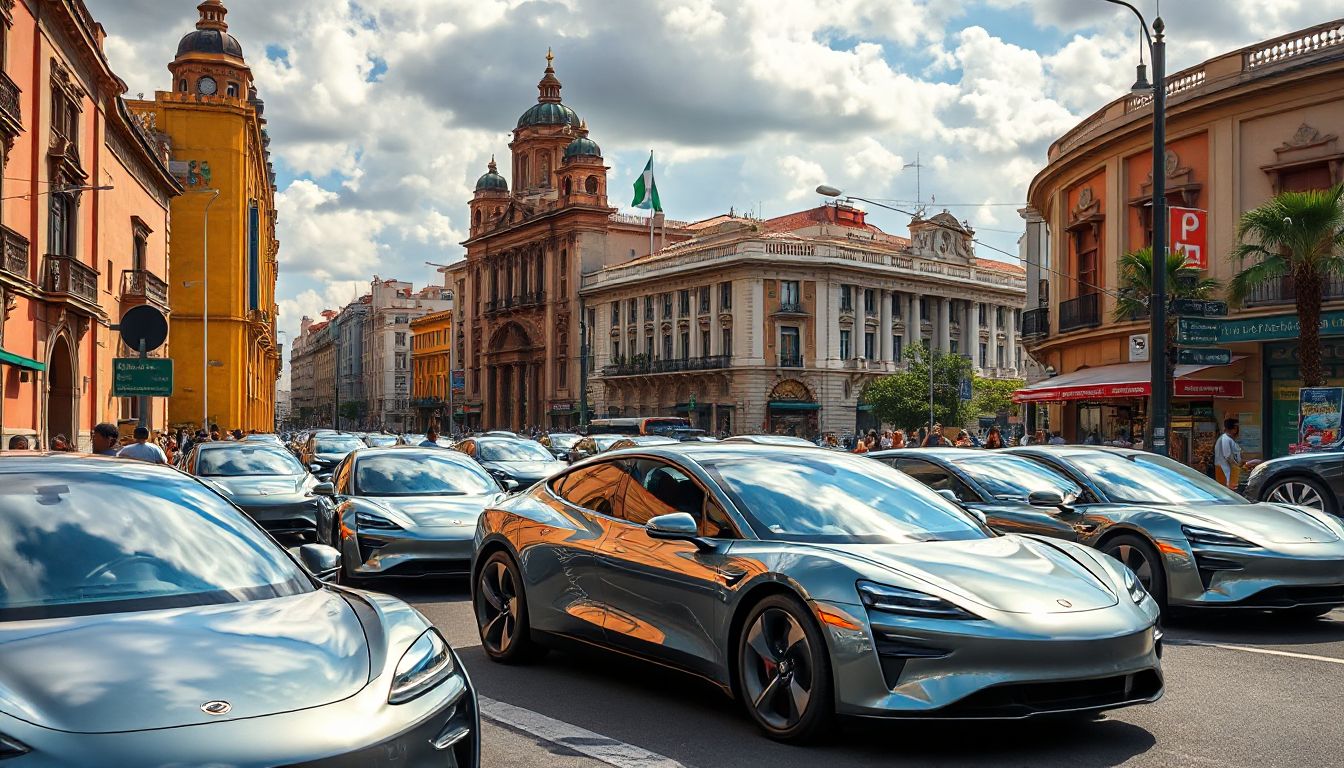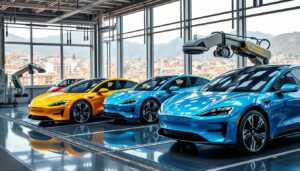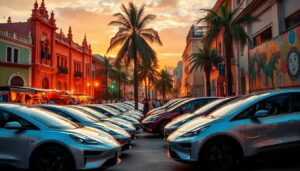Introduction
Across the globe, electric vehicles are gaining popularity as a cleaner, smarter choice for everyday transport. Mexico City is no different. With its dense traffic and air pollution problems, switching to electric cars can make a big difference. These vehicles promise cleaner air, lower energy costs, and a better future for everyone living in the city. The move toward electric cars shows how cities are changing the way we think about transportation and the environment.
The Current State of Electric Vehicles in Mexico City
Market Penetration and Adoption Rates
Electric vehicle sales are rising fast in Mexico City. After years of slow growth, more people are choosing electric cars thanks to better options and government support. In 2023, there was a 35% jump in EV sales compared to the previous year. While other Latin American cities like São Paulo and Bogotá also see growth, Mexico City leads in adoption. Consumers are excited about saving on fuel and the chance to own the latest tech.
Infrastructure Development
Finding a charging station should be easy, but it’s still a work in progress. Mexico City currently has over 1,500 charging points, with more stations opening every year. Most are fast chargers, which can power up a car in less than 30 minutes, making them convenient across the city. Public stations are mostly in busy districts, while private companies and businesses are investing in private chargers for customers and employees.
Government Policies and Incentives
The government has rolled out some programs to help EV adoption. These include tax credits, subsidies for new electric cars, and free vehicle registration. Plans are also underway to build more charging stations and offer even bigger incentives. Such policies encourage more drivers to switch, especially as awareness and trust grow.
Benefits of Electric Cars for Mexico City’s Environment and Economy
Environmental Impact
Switching to electric cars can cut down pollution in Mexico City. EVs produce no tailpipe emissions, helping reduce smog and greenhouse gases. This is crucial since the city often struggles with dangerous air quality levels. Studies show that since the early adoption of EVs, air pollutants like nitrogen oxides have dropped by nearly 10%. Electric vehicles are part of Mexico City’s effort to meet climate goals as part of global commitments.
Economic Advantages
Driving electric saves money in the long run. You pay less for electricity than gasoline and save on oil changes and other costly repairs. Local businesses also see benefits by creating jobs. As more EVs hit the streets, job opportunities open in manufacturing, charging station installation, and maintenance. Over time, less dependence on fossil fuels could even lower energy costs for everyone.
Public Health Improvements
Cleaner air means healthier people. With fewer pollutants, respiratory problems decrease and overall health improves. Experts see EVs as key to city plans to improve urban health and reduce sickness caused by pollution. Cleaner air ensures everyone breathes easier, especially vulnerable groups like children and the elderly.
Challenges Facing Electric Car Adoption in Mexico City
Infrastructure Limits
There are still not enough chargers to meet the growing demand. Many neighborhoods lack convenient charging options, causing frustration among drivers. Placing chargers where people need them most remains a challenge. Without enough infrastructure, many hesitate to buy EVs.
Consumer Awareness and Perceptions
Many people still see EVs as expensive or untrustworthy. Common worries include how far an electric car can go before needing a charge or how long it takes to recharge. Education is key. Showing how EVs can fit into daily routines helps change perceptions and boosts confidence.
Economic and Policy Barriers
Despite big benefits, upfront costs are a barrier for many. Electric cars are still more expensive than traditional fuel models. Also, incentives are limited or vary by region, making it harder for drivers to justify switching. Policymakers need to offer better support and clearer rules to encourage wider use.
Future Outlook and Opportunities for Electric Vehicles in Mexico City
Technological Innovations
Battery improvements are on the horizon, making EVs last longer and charge faster. New charging stations are smart, connecting with renewable energy sources like solar and wind. This ensures EVs are greener and more efficient than ever before.
Urban Planning and Smart Mobility
Cities are starting to include EVs in public transportation and shared mobility services. Buses and taxis are being electrified, lowering pollution in busy districts. Mexico City is also planning bike-sharing and pedestrian zones, reducing the need for cars altogether.
Collaboration and Investment Opportunities
The future of EVs depends on many players working together. Governments, private companies, and international groups are joining forces to boost infrastructure and create incentives. Public-private partnerships can unlock funds for more charging stations and better policies that push electric cars further into every neighborhood.
Conclusion
Electric cars are paving the way for a cleaner, healthier Mexico City. They offer real benefits — from cutting pollution to saving money and creating jobs. Still, challenges like infrastructure and awareness remain. Growing support from policymakers and investments in technology will accelerate this shift. Everyone — residents, businesses, and the government — needs to play a role. By working together, we can build a sustainable future where mobility is green, affordable, and accessible for all. It’s time to drive change and embrace electric vehicles for Mexico City’s brighter tomorrow.




